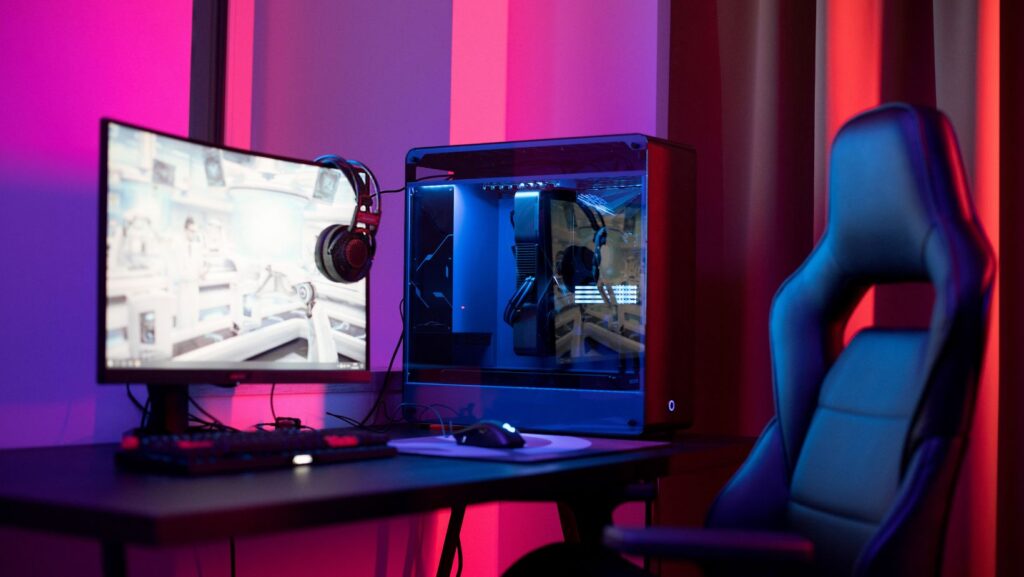The landscape of gaming advertising is rapidly evolving, driven by technological advancements and shifting consumer behaviors. As gamers worldwide spend countless hours immersed in virtual worlds, marketers are finding innovative ways to weave advertising seamlessly into these digital experiences. This trend not only captivates the attention of a highly engaged audience but also opens new avenues for creative marketing strategies.
Gaming Advertising Trends
Exploring gaming advertising trends reveals shifts towards immersive ad integration and a focus on platform effectiveness. These trends offer advertisers novel ways to capture the attention of gamers.
Platforms Dominating the Gaming Market
 Various platforms shape the current gaming sphere, prioritizing user engagement and advertising effectiveness. Mobile Gaming continues to lead, accounting for 45% of the global gaming market. It provides marketers a wide-reaching platform due to its accessibility and widespread user base. Consoles and PCs follow closely, with an emphasis on high-definition graphics and immersive experiences that attract premium advertising partnerships. Cloud gaming platforms are emerging as a versatile alternative, offering cross-platform playability without high-end hardware requirements.
Various platforms shape the current gaming sphere, prioritizing user engagement and advertising effectiveness. Mobile Gaming continues to lead, accounting for 45% of the global gaming market. It provides marketers a wide-reaching platform due to its accessibility and widespread user base. Consoles and PCs follow closely, with an emphasis on high-definition graphics and immersive experiences that attract premium advertising partnerships. Cloud gaming platforms are emerging as a versatile alternative, offering cross-platform playability without high-end hardware requirements.
Key Metrics in Gaming Advertising
When assessing the impact of gaming advertisements, several metrics prove indispensable. User Engagement Rates measure how effectively ads maintain or enhance the gaming experience without causing disruptions. High engagement rates often correlate with increased brand recall and positive consumer sentiment. Conversion Rates are crucial; they show the percentage of users who take a desired action after exposure to an ad, like making a purchase or downloading an app.
Emerging Trends in Gaming Advertising
The Rise of In-Game Advertising
 In-game advertising has become increasingly sophisticated, moving beyond mere banner ads to more seamless integrations. Brands are now embedding their messages directly into the gameplay through interactive elements or plot-embedded advertising, creating a non-intrusive user experience. For example, dynamic billboards in racing games or branded quests in role-playing games offer a more organic method of advertisement that enhances rather than disrupts the gaming experience. Companies employ analytics to measure the effectiveness of these ads, often focusing on engagement over more traditional metrics like click-through rates.
In-game advertising has become increasingly sophisticated, moving beyond mere banner ads to more seamless integrations. Brands are now embedding their messages directly into the gameplay through interactive elements or plot-embedded advertising, creating a non-intrusive user experience. For example, dynamic billboards in racing games or branded quests in role-playing games offer a more organic method of advertisement that enhances rather than disrupts the gaming experience. Companies employ analytics to measure the effectiveness of these ads, often focusing on engagement over more traditional metrics like click-through rates.
Influence of Augmented Reality and Virtual Reality
The integration of Augmented Reality (AR) and Virtual Reality (VR) takes gaming advertisements to an entirely new level of immersion. AR and VR allow advertisers to create compelling, interactive environments where physical and digital realms converge, thereby increasing the depth of user engagement. For instance, AR can overlay advertisements naturally within the user’s view of the real world, while VR can transport users to fully immersive, branded worlds.
Impact of Social Media on Gaming Advertising
Enhancing Brand Visibility Through Social Media
 Promotions on social media increase brand visibility among gamers, making use of popular platforms like Facebook, Instagram, and Twitter. Campaigns featuring compelling content, such as teasers, gameplay videos, or exclusive announcements, attract gamers’ attention effectively. Moreover, partnering with gaming influencers enhances these efforts, offering authenticity to advertising campaigns, which, if influencers enjoy a strong following, boosts visibility even further.
Promotions on social media increase brand visibility among gamers, making use of popular platforms like Facebook, Instagram, and Twitter. Campaigns featuring compelling content, such as teasers, gameplay videos, or exclusive announcements, attract gamers’ attention effectively. Moreover, partnering with gaming influencers enhances these efforts, offering authenticity to advertising campaigns, which, if influencers enjoy a strong following, boosts visibility even further.
User-generated content (UGC), such as fan art, gameplay highlights, and user feedbacks, plays a crucial role in gaming advertising on social media. It provides brands with materials that resonate well with the gaming community. Encouraging gamers to share their experiences on social media not only fosters community engagement but also acts as peer-to-peer advertising, spreading brand awareness organically.
Real-Time Engagement with Gamers
Social media allows for real-time interaction between brands and gamers, which is pivotal during new game launches or updates. Live streams, Q&A sessions, and real-time responses to user feedback keep the community engaged and can significantly enhance customer loyalty. This direct communication helps in maintaining a positive brand image while addressing gamers’ concerns, suggestions, or appreciation swiftly, reinforcing their involvement in the gaming community.



